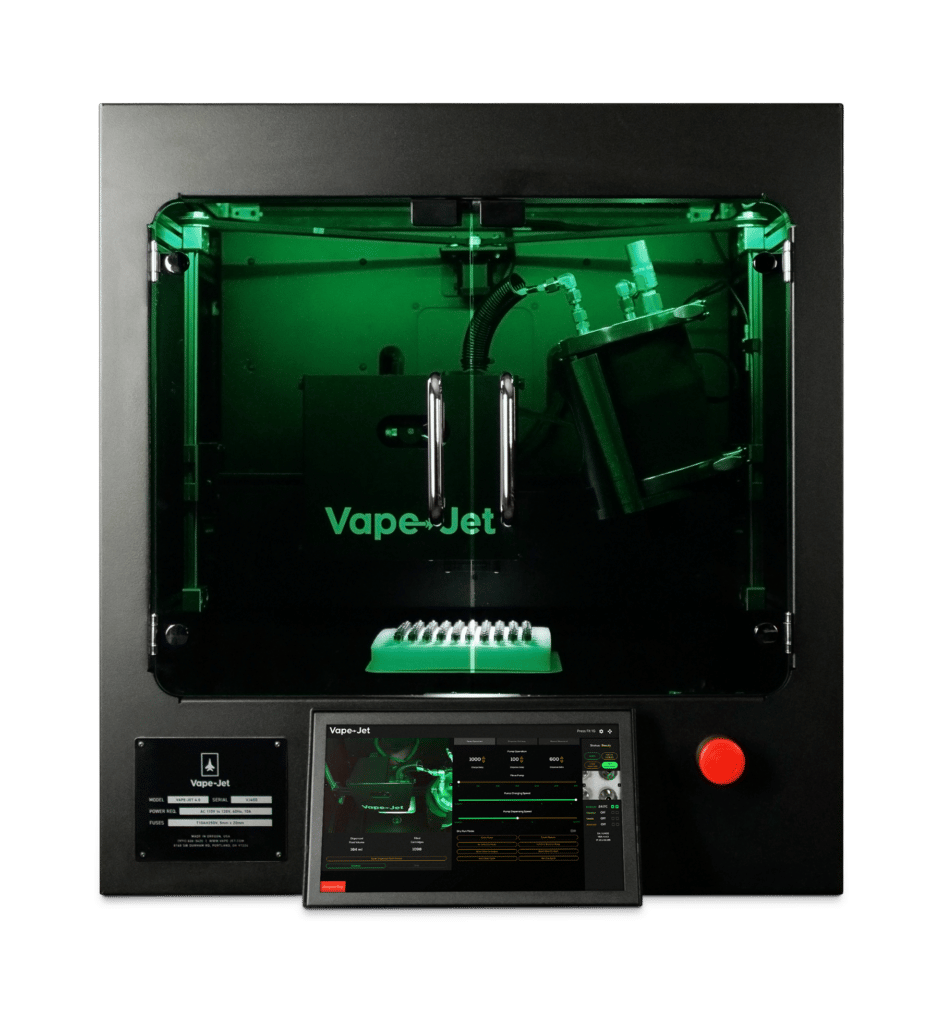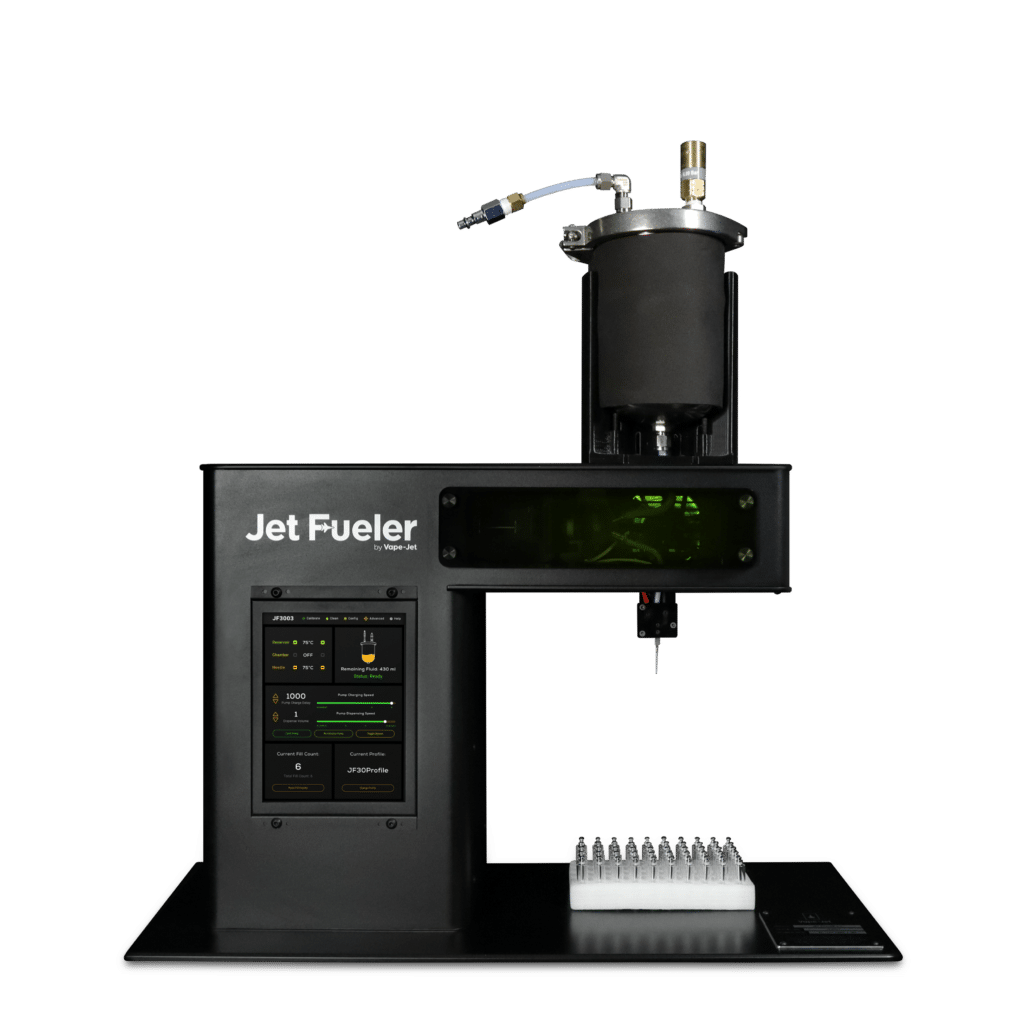We are excited to introduce Jake Rubenstein, the President & CEO of N.N. Analytics, as our first guest contributor to the Vape-Jet crew blog! Established in 2015, N.N. Analytics is a leading consulting and scientific support firm in the rapidly growing vaping industry. With an ISO 17025-accredited laboratory and a diverse team of professionals in regulatory compliance, manufacturing, software, and reverse engineering, N.N. Analytics helps their clients navigate the complex world of national and international regulation. With customers like Cilicon+, AVD, and Blinc you can trust that the team at N.N. is one of the best labs in the industry.
As a full-service nicotine, e-liquid, and cannabis/hemp testing laboratory out of San Diego, California, N.N. Analytics provides numerous services, including vape cartridge leak and performance testing to help eliminate cartridge loss and improper formulations. They’ve even developed their own aerosol testing apparatuses to ensure the highest standards of results.

At MJBizCon 2022, the Vape-Jet crew bonded with Jake over our shared love of the science behind great cannabis products. Together, we look forward to providing our customers with even more comprehensive support in assessing their oil and hardware for optimal performance, standardizing their formulations, minimizing end-user returns, and achieving better customer satisfaction and success.
What Causes Vape Cartridge Failures?
Most common vape cartridge failures are caused by improper hardware selection for that specific oil formulation, leading to poor performance within the hardware.
How do you measure performance?
We measure key variables of the oil and cartridge combination. Proper performance of an oil and cartridge combination starts with a regulated oil feed rate into the coil atomizer, allowing for atomization of oil into the vapor phase at a constant and predictable rate, without leaks or dry hits.
Now, let’s look at the reasons vape cartridges fail in a bit more depth.

The Top 5 Reasons for Vape Cartridges Failures
First, Some Definitions
Rheology—studies the deformation of the flow of material, and in this case, the liquid flowing through a vape cartridge reservoir into the vaporization chamber and out of the mouthpiece.
Viscosity—a measure of a liquid’s thickness and ability to deform to a container/force when pressure or heat is applied.
Shear-Rate—the stickiness of a liquid and how strong it clings to a container or surface.
Elastic Modulus—a liquid’s ability to stretch when a force is applied, either by pressure or by heat.
Tensile Modulus—a liquid’s ability to resist deformation when a force is applied, either by pressure or by heat.
#1 Failure: Leaks
Oil leakage into the air inlet chamber is due to a mismatch in:
- Cartridge Feed-Hole Diameter—the aperture of the feed hole is too large, allowing liquid to flood the cartridge-wicking material too quickly.
- Wicking Material Porosity—porosity is too high (not dense enough), leading to liquid seeping through the wicking material and leaking out of the bottom of the cartridge.
- Rheology of Liquid is Too Thin—the viscosity is too low, the elastic modulus is non-Newtonian, the shear rate is too low, or the tensile modulus is non-Newtonian or too high.
#2 Failure: Clogs
Lack of wicking material saturation is due to:
- Cartridge Feed Hole Diameter—aperture is too small for liquid rheology.
- Wicking Material Porosity—porosity is too high (too dense), leading to liquid not sufficiently saturating the wicking material, which presents as a dry hit.
- Rheology of liquid being too thick—viscosity is too high, elastic modulus or tensile modulus is non-Newtonian, shear rate is too high.
#3 Failure: Hardware Issues
Cartridge Feed Hole Diameter
- Feed holes too large or too many—flooding of the wicking material in the atomization chamber.
- Feed holes too small or too few—poor saturation of the wicking material in the atomization chamber, leading to dry hits, which can be harmful.
Coil-Wicking Material Selection
Ceramic
- Ceramic particles can be emitted if the coils are not well washed/sintered before installation, leading to nano-particulates in the vapor stream.
- Porosity (see below)
Rayon
- Density (see below)
Cotton
- Same issues as rayon wicking.
Coil-Wicking Material Porosity/Density
- Porosity is too high (not dense enough)—liquid flows too easily through and saturates the atomization chamber, leading to leaks through the 510-thread or clogs through the center post.
- Porosity is too low (too dense)—liquid does not flow easily or saturate the atomization chamber, leading to dry-hits or the emission of harmful constituents due to elevated vaping temperatures.
510-Thread Inlet Air Hole Feed Size
- Too large—leads to leakage related to improper rheology, making liquid too thin.
- Too small—alters the ability to generate sufficient amounts of vapor, leading to dry hits, which can be harmful.
Center Post Diameter
- Too small of a diameter leads to clogs from non-atomized liquid and a noticeable pressure drop.
Center Post Venturi-Effect Pressure Drop and Airflow
- Buildup of excess liquid that was not vaporized in the center post, leading to clogs.
- Rheology is too thin, leading to leaks.
Cartridge Reservoir Size and Head-Pressure
- Too large—can lead to too much head pressure, flooding the wicking material in the atomization chamber, and is a major cause of leaks.
- Too small—can lead to a lack of head pressure and dry hits due to a lack of liquid feed into the coil-wicking material in the atomization chamber.
#4 Failure: Liquid-Based Issues
- Batch-by-batch variation of oils—when distilled in different batches, the rheology of cannabis/hemp oils can vary greatly from previous batches.
- Batch-by-batch variation of terpenoids and flavoring components—terpene products, especially in live resin formulations, can vary greatly.
- Measurements and mixing during liquid product assembly—a single variation in standard operating procedures can disrupt the balance between liquid rheology and hardware.
#5 Failure: Filling and Capping Parameters and Execution
- Flooding of the Cartridge Coil—high fill temperature, unreasonably fast fill speed, or an improper fill angle leads to fast flooding without air gaps next to the coil-wicking material.
- Insufficient Fill Volumes—overfilling of cartridges forces solution into the coil-wicking material before negative pressure is initiated by standard vaping conditions.
- Clogging—poor saturation of the cartridge leads to capping failures from the application of caps without correct pressure leading to air gaps in the seal at the cap.

Joining Forces: Vape-Jet x N.N. Analytics
Understanding the reasons vape cartridges fail is crucial to creating and producing a high-quality and reliable product. Whether it is due to hardware selection, leaks, clogs, hardware issues, or improper coil-wicking material selection, having the right knowledge and resources can help prevent common vape cartridge failures.
But where do we go from here?
Stay tuned for our next article where we discuss practical solutions to overcome these common vape cartridge failures and provide guidance for achieving enhanced product performance and a smoother vaping experience. If you’re looking to optimize your vape cartridge formulations, minimize returns, and achieve better results, you’re in the right spot.
Browse N.N. Analytics’ Complete Services
Need some help taking your vape cartridge filling performance to the next level? Reach out to our crew and learn how Vape-Jet can provide next-level products for your customers.
Some of our success stories:
- Ration, Blue Box Brands & BeGreen Supply
- Fernway
- True North Collective MI
- C3 Industries
- Terrapin Care Station
Don’t forget to sign up for our monthly Re:Fill newsletter to get early access to company updates, product releases, and other exciting announcements. Follow us on the essentials, too: Facebook, Instagram, LinkedIn, Twitter and YouTube.












